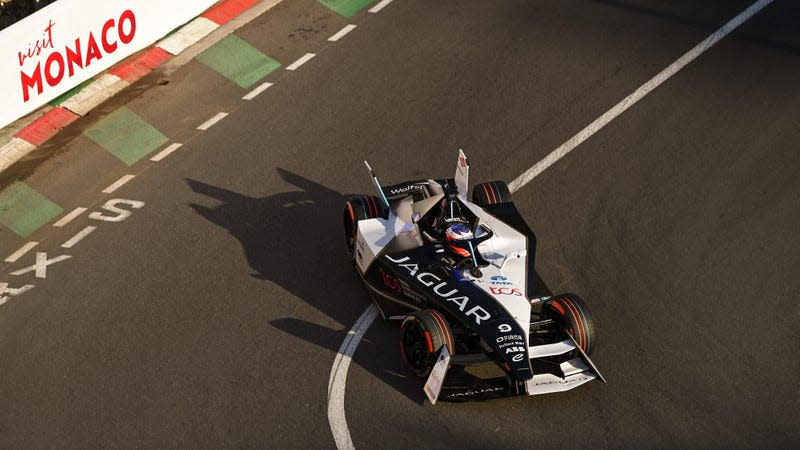What It Takes To Build An FIA-Grade Street Circuit From Scratch

The history of motorsport is defined by a series of street races. Some, like the Monte Carlo Street Circuit, carry on in a fairly similar fashion compared to the events of the last century. Other tracks, like Watkins Glen International, started life as a street course before transitioning into a permanent facility. But once started as a haphazard closing of roads to form a track has become a significantly more complex endeavor that can last around 18 months — and no series epitomizes that street circuit struggle quite like Formula E.
One of the founding tenets of the all-electric open-wheel series was the idea that FE should bring accessible motorsport to the people, which means racing as close to city centers as possible. While Formula 1's recent push for city-focused racing has included things like organizing a “street” race in the parking lot of a stadium, FE has aimed to get as close to the action as possible: along Biscayne Bay in Miami, around Les Invalides in Paris, or next to the Kremlin in Moscow. Such high-profile locations require a whole lot of logistical work before a series can even consider competing there.
Read more
“It’s a little like dating,” Oli McCrudden, City Development Director at Formula E, said. “Both sides have a clear idea of what they want the future to look like, but first of all they need to be sure they’re with someone who shares the same vision. It requires open communication, collaboration, understanding and compromise.”
This season, FE has introduced several new events: the Hyderabad ePrix in India, the São Paulo ePrix in Brazil, the Cape Town ePrix in South Africa, and the Portland ePrix in America. Of those circuits, only the Portland ePrix took place at a permanent facility; the rest required a long series of negotiations in order to make the races happen.
Any FE event requires a collaboration between the series, the FIA, the National Sporting Authority (ASN), and local promoters — so, as you can imagine, there are plenty of ideas to consider, needs to meet, and formal needs to satisfy.
About 18 months before a city wants to host a race, that city will formally register its interest with Formula E, which is when McCrudden comes in. He begins to explore the goals of the city, and with the initial values settled, a track designer will begin drafting a circuit based on available roads and with the FIA’s track design standards in mind (you can read all those standards in Appendix O of the FIA’s International Sporting Code). That proposed design also includes tons of information about the logistical hurdles that will have to be overcome; a feasibility study will further determine if an event can actually take place on those specific roads.
Then, nine months before the event, the ASN, FIA Safety Department, and FIA Circuits Commission come together to begin sorting out further logistics: they’ll sort out safety features, necessary structures (like garages and medical centers), marshal and firefighter requirements, and more. Tweaks will inevitably be made as the process goes on, and when The Powers That Be are happy with a basic format, the FIA starts putting on simulations to guarantee that there are sufficient braking zones for energy regeneration. Once again, more tweaks might be made before the track is released to teams, who can then begin their own set of simulations.
While some tracks begin prepping for the event well in advance, most track preparation begins two weeks before the ePrix. Here, the FIA sends over a fleet of experts to guarantee that the track meets its safety standards, making last-minute tweaks as necessary.
And that brings us to the race weekend itself. On Thursday morning, FIA Circuit Inspector (and Formula E Race Director) Scot Elkins joins the safety car drivers, sporting delegates, e-safety delegates, circuit builders, and other FE staff for a track walk to ensure everyone is familiar with the state of things. After that, Elkins gives the track the OK, opening it up for the initial shakedowns and track sessions.
That isn’t the last planning that takes place, though; months after the ePrix takes place, the FIA, FE, and promoters all revisit the event to evaluate if any changes need to be made to the layout.
FE has seen its fair share of track successes — and plenty of circuits that have taken a race or two to come into their own. Few fans, though, realize just how much work goes into creating even a single event, let alone developing a full calendar that features multiple brand-new street circuits.
More from Jalopnik
Sign up for Jalopnik's Newsletter. For the latest news, Facebook, Twitter and Instagram.

 Yahoo Autos
Yahoo Autos 